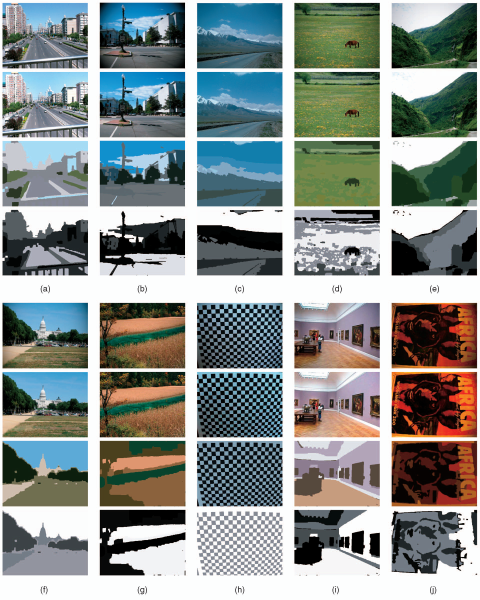Single-Image Vignetting Correction
People: Yuanjie Zheng and Chandra Kambhamettu
Vignetting refers to the phenomenon of brightness attenuation away from the image center, and is an artifact that is prevalent in photography. There are several factors that contribute to vignetting. Some arise from the optical properties of camera lenses, the most prominent of which is off-axis illumination falloff. To determine the vignetting effects in an image, the most straightforward approach involves capturing an image completely spanned by a uniform scene region, such that brightness variations can solely be attributed to vignetting. In such a calibration image, ratios of intensity with respect to the pixel on the optical axis describe the vignetting function. Suitable imaging conditions for this approach, however, can be challenging to produce due to uneven illumination and camera tilt, and the vignetting measurements are valid only for images captured by the camera under the same camera settings. Moreover, a calibration image can be recorded only if the camera is at hand; consequently, this approach cannot be used to correct images captured by unknown cameras, such as images downloaded from the Web. We develop a method for single-image vignetting correction that acquires vignetting data by finding image regions in which vignetting can be distinguished from other sources of intensity variation. These regions are located using adaptive segmentation techniques designed to reveal image areas with uniform scene radiance characteristics and gradual brightness variations that can be attributed to vignetting. To maximize the use of available information in the image, our technique extracts vignetting data from both textured and untextured regions.

Vignetting correction results. Each set from top to bottom: original image, vignetting corrected image, vignetting-based segmentation, and region weights (brighter pixels indicate higher weights).
Software
- See related code
Related publications
- Yuanjie Zheng, Stephen Lin, Chandra Kambhamettu, Jingyi Yu, Sing Bing Kang, Single-Image Vignetting Correction, IEEE Transactions on Pattern Analysis and Machine Intelligence, 2009.
- Yuanjie Zheng, Chandra Kambhamettu, Stephen Lin, Single-Image Optical Center Estimation from Vignetting and Tangential Gradient Symmetry, IEEE Conference on Computer Vision and Pattern Recognition (CVPR) 2009.
